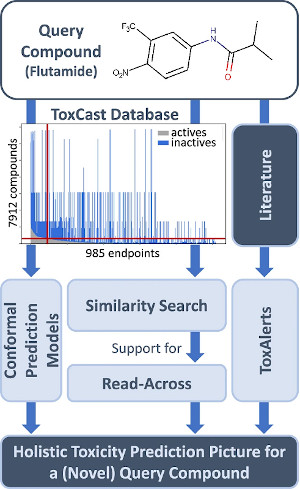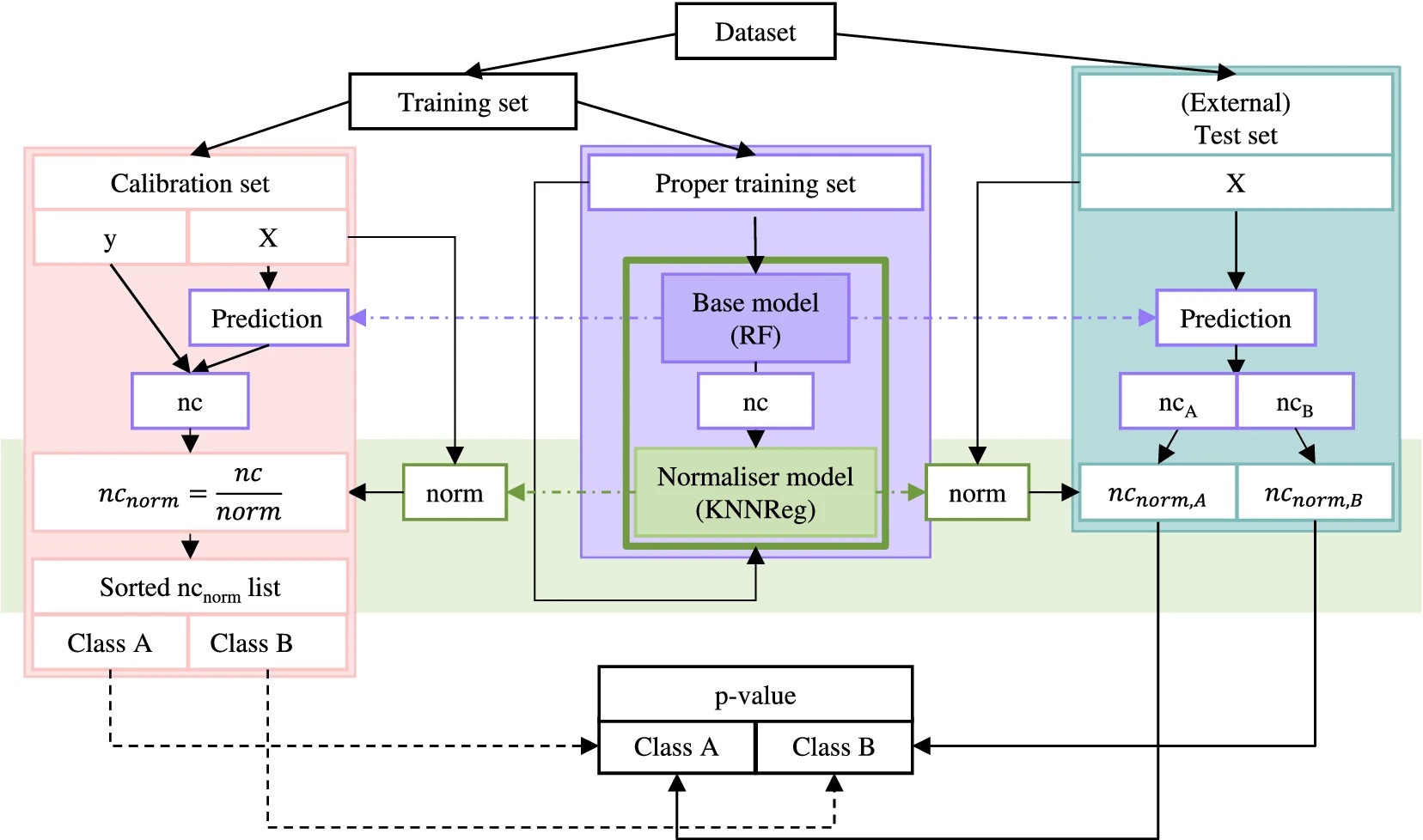KnowTox
Computational tools for toxicity prediction are promising in the process of reducing, refining and replacing animal testing. To assess the toxicity of novel chemical entities, regulatory agencies require in vivo testing for several toxic endpoints. In 2017, roughly 9.39 million laboratory animals have been deployed in the European Union, of which 2.19 million were used for regulatory testing purposes (~11% of those for testing industrial chemicals; source: European Commission Report). Thus, the establishment of alternative methods, and with it the reduction of animal testing, is of utmost importance.
While grouping of molecules and read-across are already the most widely used non-animal methods ( ECHA), KnowTox is a novel pipeline that combines three different in silico toxicology approaches to allow for confident prediction of potentially toxic effects of novel chemical entities. KnowTox combines machine learning models, alerts for toxic substructures and computational support for read-across.

Figure: Overview of KnowTox. Combining toxicity information from different sources, the complementary outputs of the KnowTox tool help to generate a holistic toxicity prediction picture for a novel query compound (figure taken from Morger, 2020).
When applying machine learning models, applicability and reliability of predictions for new chemicals are much needed. This was approached using conformal prediction. Several adaptions of the framework were investigated to improve the model performance (i.e. KNN normalization and balancing of proper training set). The different model set-ups were validated using androgen receptor antagonism datasets.
Excursus on Conformal Prediction
Conformal prediction is a recently promoted method for confidence estimation. A conformal predictor returns, whether enough evidence is given to reliably assign the query substance to a certain class. The conformal prediction framework is built on top of machine learning models, and includes an additional calibration step. Thus, predictions made for a query compound are compared to those made for the calibration set compounds.

Figure: Overview of the conformal prediction (classification) framework. The green bar highlights the KNN Regressor normaliser model introduced in KnowTox (figure taken from Morger, 2020).
Software and resources
- knowtox_manuscript_SI · SI notebook - build & evaluate conformal predictor and apply to external data
People
Funding
- Bundesministerium für Bildung und Forschung, grant ID 031A262C
- HaVo-Stiftung
- We thank BASF for financial support
Publications
-
- Andrea Morger
- Miriam Mathea
- Janosch H. Achenbach
- Antje Wolf
- Roland Buesen
- Klaus-Juergen Schleifer
- Robert Landsiedel
- Andrea Volkamer